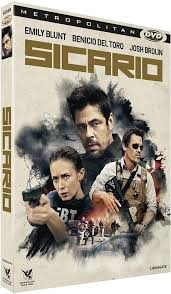
Introduction
The term ‘sicario’ has become increasingly recognized in both popular culture and serious discourse surrounding organized crime, especially in Latin America. This Spanish word translates to ‘hitman’ in English and encompasses a range of criminal activities associated with contract killing, including the dynamics of drug cartels and the violence they perpetuate. Understanding the context of a sicario is crucial for grasping not only the criminal landscape but also broader socio-political issues and media representations.
Current Context
Recent reports highlight how the role of the sicario has evolved with the progression of drug trafficking and organized crime. According to a report from the United Nations Office on Drugs and Crime (UNODC), the escalating violence in countries like Mexico has resulted in a growing number of sicarios being employed by various drug cartels. This change has been significantly influenced by territorial disputes, evolving law enforcement tactics, and shifting drug markets, leading to increased desperation among cartel leaders to secure power and territories.
In 2023, various media outlets reported on high-profile arrests related to sicario activities, illustrating the ongoing conflict between law enforcement and organized crime. For instance, the arrest of several cartel members in Mexico underscored how law enforcement agencies are beginning to adapt their strategies to better investigate and dismantle these networks. The frequency and brutality associated with sicario actions serve as a reminder of the pervasive violence that continues to threaten the lives of ordinary citizens in areas impacted by drug trafficking.
Cultural Representation and Significance
Apart from its implications in real-life crime, the concept of a sicario has permeated popular culture, evidenced by films and novels that explore this darker side of human nature. Movies such as ‘Sicario’ (2015) and its sequel, along with various crime novels, have provided audiences with a fictional yet sobering glimpse into the world of contract killers and the ramifications of their actions. Such portrayals raise questions about morality, justice, and the human condition, ultimately contributing to a deeper societal discourse regarding the impact of drugs and violence.
Conclusion
Understanding the term ‘sicario’ and its implications is vital for grasping the complexities of contemporary crime, violence, and socio-political issues. As law enforcement continues to grapple with this phenomenon, the portrayal of sicarios in media sparks important conversations about individual agency, morality, and the societal structures that foster such violence. For readers, recognizing the multi-dimensional nature of the sicario not only highlights the reality of organized crime but also invites critical reflection on solutions and preventive measures that can help mitigate this global issue.



